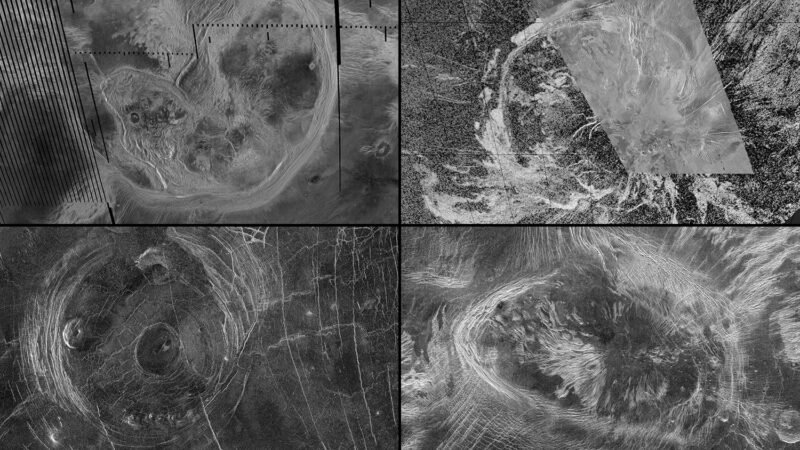Summary Points
-
VERITAS Mission Launch: NASA’s upcoming VERITAS mission, set to launch no earlier than 2031, will provide crucial high-resolution gravity data to study Venus’s geological features, particularly coronae.
-
Mystery of Coronae: Coronae, large geological structures on Venus, have long puzzled scientists regarding their formation, with new evidence suggesting they result from various ongoing active geological processes.
-
3D Geodynamic Models: Researchers utilized advanced 3D geodynamic models to explore the formation of plume-induced coronae, integrating gravity and topography data to uncover less dense, buoyant mantle materials beneath the surface.
-
Role of Subduction: The study highlights subduction as a key tectonic process on Venus, drawing parallels with Earth’s tectonics, where the recycling of materials occurs and generates geological activity, such as earthquakes and volcanic eruptions.
NASA’s Magellan Mission Suggests Tectonic Activity on Venus
Recent findings from NASA’s Magellan mission reveal intriguing signs of tectonic activity on Venus. Using advanced radar, Magellan mapped the planet’s mountains and plains, uncovering mysterious geological structures called coronae. These formations have puzzled scientists since their discovery.
Interestingly, researchers now believe that various active processes likely drive the formation of these coronae. In fact, some scientists propose that similar processes may have shaped Earth early in its history. “Coronae are abundant on Venus. They are very large features, and people have proposed different theories over the years as to how they formed,” said one expert.
To explore these theories, scientists developed 3D geodynamic models, closely examining the data gathered from Magellan. The mission’s gravity data proved essential, revealing less dense and hotter materials beneath the surface. This information, not visible through topography alone, strengthens the link between coronae and tectonic activity.
Of the 75 coronae studied, 52 show signs of buoyant mantle material underneath. This suggests an active tectonic landscape, much like Earth’s. One process that stands out is subduction, where tectonic plates dive beneath one another. On Earth, this can trigger earthquakes and volcanic activity, illustrating a dynamic planet.
As members of NASA’s forthcoming VERITAS mission gear up for future exploration, they will focus on gathering high-resolution gravity data. This mission aims to offer deeper insights into Venus’s geology. Understanding the planet’s tectonic processes could impact technology development and planetary science, enhancing our knowledge of Earth’s history and its geological connections to other celestial bodies.
These discoveries not only expand our comprehension of Venus but also improve our understanding of planetary formations in general. As scientists continue their research, they hope to shed more light on the processes shaping not just Venus, but potentially other planets across the solar system.
Stay Ahead with the Latest Tech Trends
Learn how the Internet of Things (IoT) is transforming everyday life.
Explore past and present digital transformations on the Internet Archive.
SciV1

